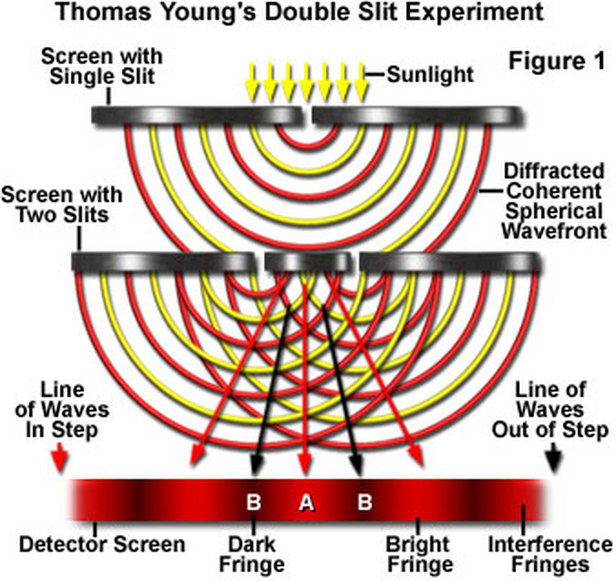Double Slit Experiment
Probably Thomas Young's most famous experiment is the double slit experiment. Young hypothesized that light was a wave. Logically, since light is a wave it must react with other light waves. Similar to how waves in water react when they collide, he stated that light waves should either destory or reinforce each other depending on whether the crests meet to make a larger wave or a crest meets a trough to cancel each other out. To demonstrate this, Young set up his double slit apparatus. He made a small slit in a screen that is otherwise impenetrable to light and let sunlight shine against it. The light shined through the first slit and against another screen, this time having two slits. Young witnessed that when the slits were large and spaced far apart and close to the first screen, two overlapping areas of light formed on the screen. When he moved them closer together and made them smaller though, the light passing through the sligts produced distinct bands of color separated by darker areas. Young decided that these colored bands could only be produced if light were acting like a wave. Below is the basic layout of Thomas Young's double slit experiment to help give you a better visual idea. For an interactive apparatus where you can vary the distance between the slits, visit http://micro.magnet.fsu.edu/primer/java/interference/doubleslit/
